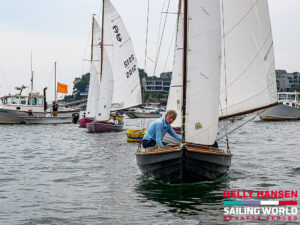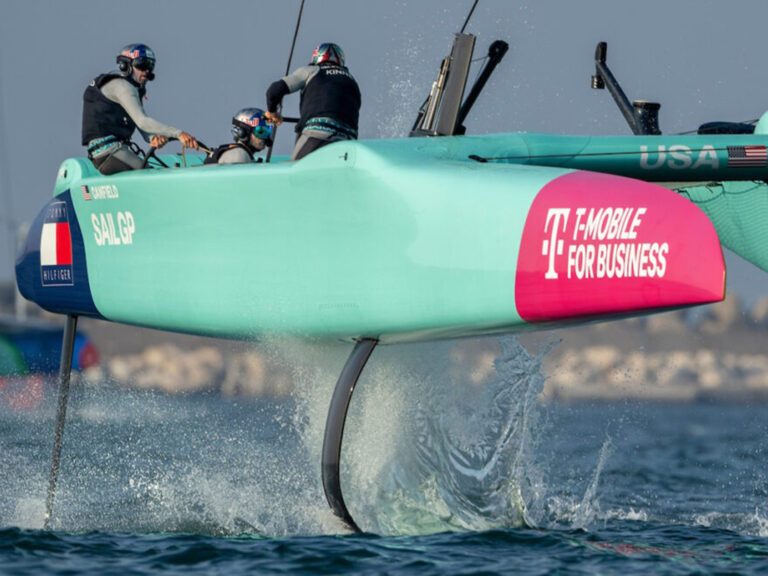If you want to geek out on high-tech singlehanded catamarans this week, the place to be is St. Petersburg, Florida’s tiny Spa Beach where nearly 40 A Class catamarans and their tweaking-obsessed owners have encamped for the Helly Hansen NOOD Regatta this weekend. Scattered across the grass park next to the beach are generations of these sexy high-performance catamarans, each of them on display like antique car show. Want to know more about any one of them? Just go ahead and ask. The cool cats love to talk cat sailing.
The divide among the newer “foilers” and “floaters” as the traditional A cats are now called, is almost equal here at the NOOD Regatta. Drawn to these singlehanders are like minded sailors that simply like to sail fast and challenge themselves with a platform that will reward no matter the condition require skill across all conditions.
This includes guys like Matthew Keenan, of Highlands, N.J., who joined the ranks of the foilers last year. While most A-cat sailors here likely cut their teeth as floaters, Keenan, who is winning the class after two days of racing, went straight to a foiler. “I did a lot of sailing in my earlier years (in the early 2000s) and then I kind of stopped,” says Keenan, a tugboat captain. “I went to school and did a lot of kiteboarding and then I saw that foiling developed and thought I need to get a piece of that.”
He picked up a second-hand foiling boat (new foilers can retail for $25,000 and up), and has been a quick study in the art of flight, which requires exhausting physical and mental stamina, especially when winds are light to marginal. When it’s windier, the foilers fly easier, but staying on the boat through high-speed maneuvers remains a constant battle. Capsizing, they’ll tell you is slow. Real slow.
Still, one of the most difficult aspects of racing in the mixed class can be going up against the classics, says Keenan. “Upwind everybody’s pretty much the same speed,” he says. “If the foilers can stay airborne and get going downwind they’re much faster and we can sail relatively the same angle downwind so we pull away pretty quickly. So upwind there about the same but downwind with foiling conditions we can pull away.”
When it’s marginal and choppy, however, it’s hard to get up the course against the floaters. They may be slower, he says, but “they have the best VMG over the course whereas we’re just reaching back and forth just trying to work the boat up on the foils. You can end up sailing in the totally wrong direction for a half mile before you realize it’s not going to pay.”
This absentmindedness and tendency to find oneself well overstood is due to the inadvertent mind control that takes over once aloft. It’s a mental condition described to me by one A Cat devotee this morning: “It’s just so damn fun, I find myself not caring at all about where I finish.”









